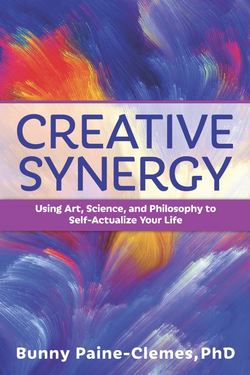Читать книгу Creative Synergy - Bunny Paine-Clemes - Страница 28
На сайте Литреса книга снята с продажи.
The Process of Creativity
ОглавлениеLike using the key, creativity is a process. You may have seen it listed as four, five, or six steps.19 The usual description is of five stages:
Preparation. The creator becomes immersed in the formulas and rules of the craft. Often quoted is Pasteur’s dictum: “Chance favors the prepared mind.” Edison tested thousands of filaments to find one that would work in his incandescent electric light.20 The often-cited “ten-year rule” is that a successful artist must practice the craft at least ten years before success.21
Concentration. The creator becomes obsessed. Flaubert spent whole nights searching for a single adjective and forced his mistress to live away from him, in Paris, lest he become distracted. Gauguin abandoned his family in France to find his artistic subjects in Tahiti. Edison spent days in his lab without going home;22 and Einstein was the “icon” of the “absent-minded professor.” On a journey, he sometimes forgot some of his clothes or even his suitcase.23
Incubation. The creator hits a wall, runs into a problem. Meanwhile, unconscious processes work on a solution. Poincaré, a mathematician, said, “Often when one is working at a hard question, nothing good is accomplished at the first attack. Then one takes a rest, shorter or longer, and sets down anew to the work.”24
Illumination. The eureka moment arrives. Poincaré called it “a manifestation of long, unconscious prior work.”25 Nobel Prize winner Barbara McClintock called it “integration.” She claimed that although the solution came suddenly, it was not a lightning bolt of intuition but in the words of her biographer Nathaniel Comfort, a sudden “synthesis of many bits of knowledge.”26 Comfort believes that this sort of thinking is common in math and physics: “The most famous integrator of all was Albert Einstein.” His eureka moments came in pictures, such as when he conceived the relativity theory by imagining himself riding a beam of light. McClintock’s illuminations came too fast for pictures.27
Verification. The creator must test the work to identify its usefulness in the field, defined by Csikszentmihalyi as “all the individuals who act as gatekeepers.”28 A poet like Emily Dickinson or a painter like Vincent van Gogh may eschew this step or make light of it; an engineer considers this phase crucial.29 Verification was a problem for Edison—creative in the realm of ideas yet unable to grasp the pragmatics of marketing. He insisted that his phonograph should be used for office dictation rather than for music. When forced to produce records, he disdained the popular songs for which the public clamored, such as “Throw Him Down, McCloskey” and “One of His Legs is Longer Than It Really Ought to Be.” He ignored the popularity of the cheap AC current and fought a losing battle for DC. He took an adamant stand against movie projection systems in favor of kinetoscopes into which people stooped to stare. His friend Henry Ford called Edison “‘the world’s greatest inventor and world’s worst businessman.’”30
